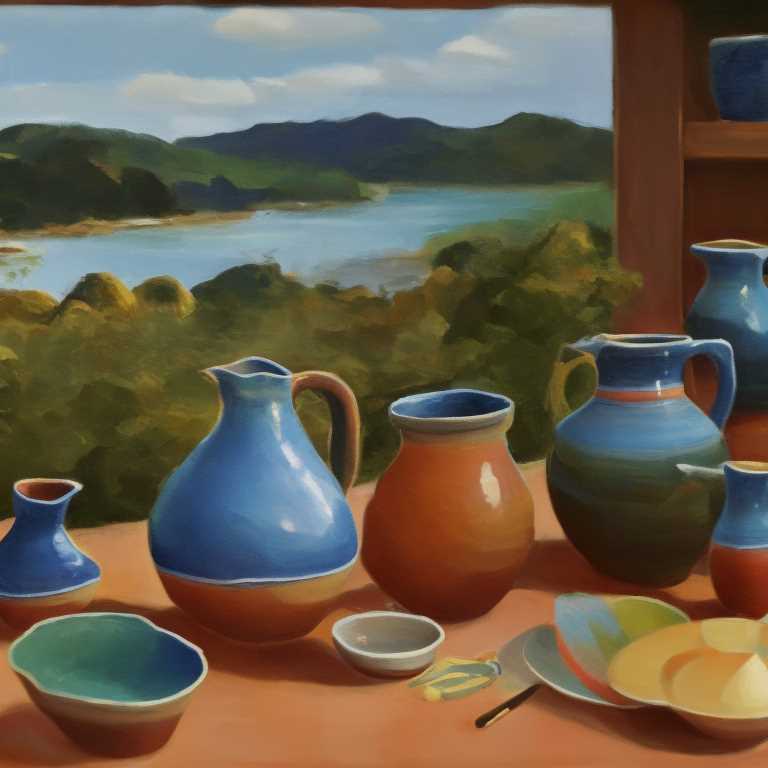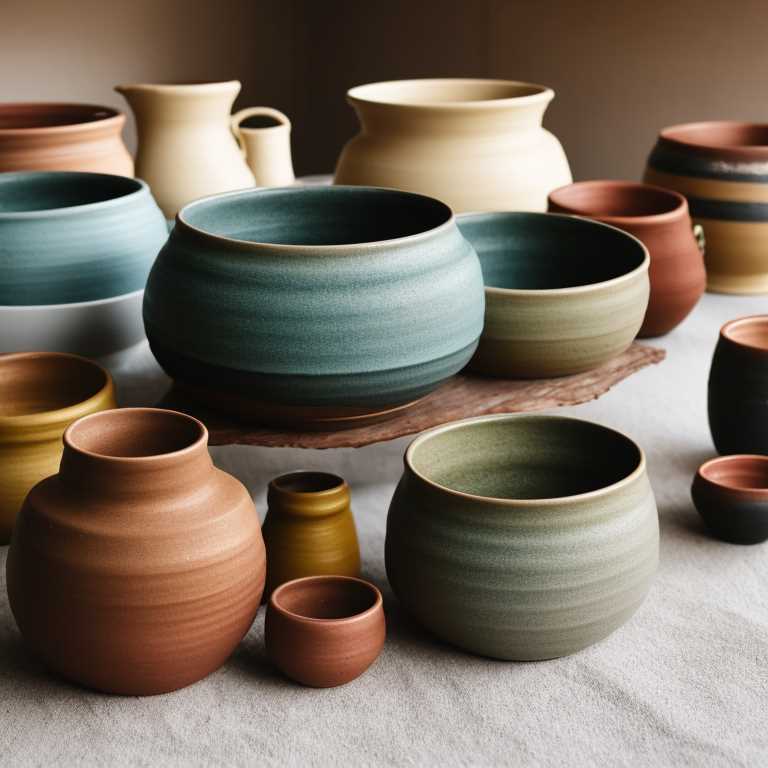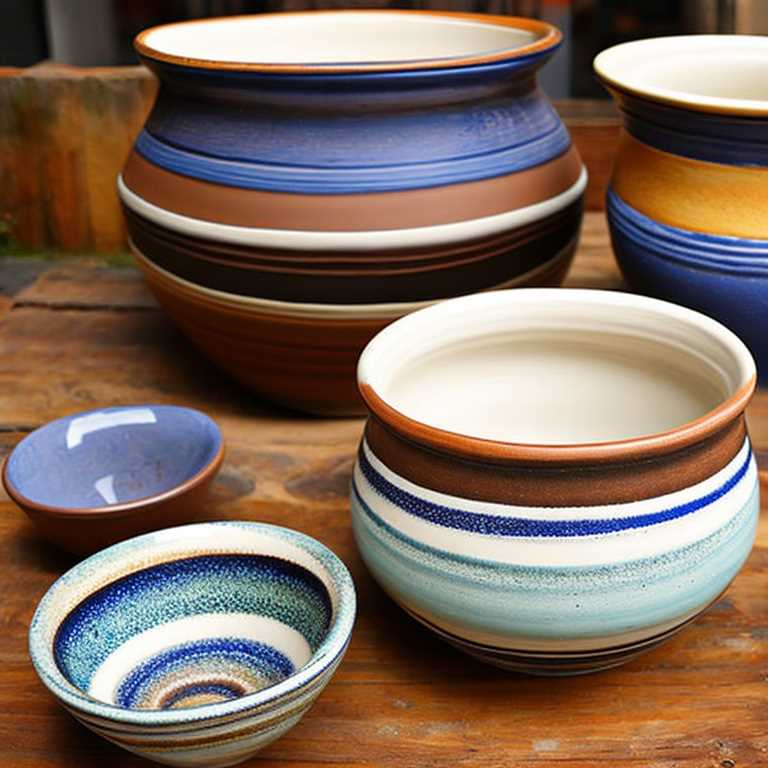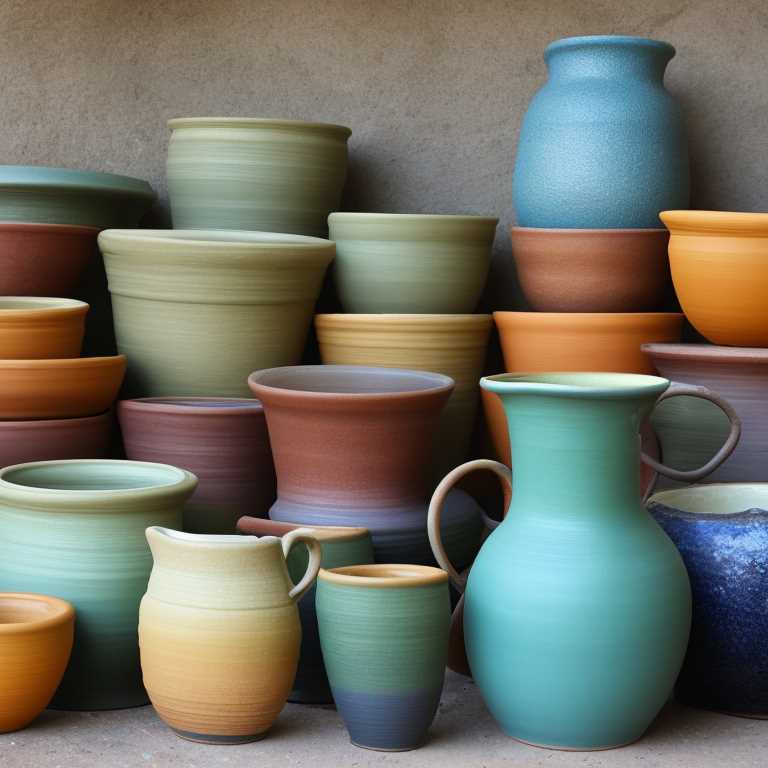Marshall Pottery is a well-known brand of pottery that has been in production since the 1800s. Over the years, the company has gone through numerous changes in ownership, management, and production methods, which can make it difficult to determine the age of a particular piece of Marshall Pottery. However, with a little knowledge and some careful research, it is possible to identify the age of Marshall Pottery and to determine its value to collectors and enthusiasts.
One of the first things to consider when trying to determine the age of Marshall Pottery is the company's history. Marshall Pottery was founded in 1895 by W.T. Wilson in Marshall, Texas. The company began as a small operation, producing utilitarian pieces such as crocks, jugs, and churns. However, as the demand for pottery grew, Marshall Pottery expanded its product line to include decorative pieces such as vases, bowls, and figurines.
In the early years, Marshall Pottery used a variety of marks to identify its products. These marks included the company name, the location (Marshall, Texas), and sometimes the initials of the owner or manager. As the company grew, it began to use more elaborate marks that included a variety of symbols and designs. These marks can be helpful in determining the age of a particular piece of Marshall Pottery.
Another important factor to consider when trying to identify the age of Marshall Pottery is the production process. Over the years, Marshall Pottery has used several different production methods, including hand-throwing, mold-casting, and slip-casting. Each method has its own unique characteristics that can help to date a piece of pottery.
Hand-throwing is the oldest and most traditional method of pottery production. It involves shaping the clay by hand on a potter's wheel. Hand-thrown pieces are typically irregular in shape and have a rougher texture than pieces produced by other methods. Marshall Pottery used hand-throwing in the early years of the company's history, but it is not often used today.
Mold-casting is a method of pottery production that involves pouring liquid clay into a mold and allowing it to dry before removing the mold. Mold-casting produces pieces that are uniform in shape and size, with a smooth texture. Marshall Pottery began using mold-casting in the early 1900s and continued to use it throughout much of the 20th century.
Slip-casting is a more modern method of pottery production that involves pouring liquid clay into a mold and allowing it to dry before firing. Slip-casting produces pieces that are very uniform in shape and size, with a smooth texture. Marshall Pottery began using slip-casting in the mid-20th century and continues to use it today.
Another important factor to consider when trying to date Marshall Pottery is the glaze. Marshall Pottery has used a variety of glazes over the years, including salt glaze, alkaline glaze, and lead glaze. The type of glaze used can help to date a piece of pottery.
Salt glaze is a type of glaze that was commonly used in the 19th century. It involves throwing salt into the kiln during the firing process, which creates a distinctive, mottled texture on the surface of the pottery. Marshall Pottery used salt glaze in its early years, but it is not often used today.
Alkaline glaze is a type of glaze that was commonly used in the early 20th century. It is made from a mixture of ash and clay, and produces a smooth, glossy finish on the surface of the pottery. Marshall Pottery used alkaline glaze throughout much of the 20th century.
Lead glaze is a type of glaze that was commonly used in the mid-20th century. It produces a very smooth, glossy finish on the surface of the pottery, and often has a bright, vibrant color. Marshall Pottery used lead glaze in the 1950s and 1960s.
In addition to these factors, there are several other ways to identify the age of Marshall Pottery. One way is to look at the style and design of the pottery. Marshall Pottery has produced a wide variety of styles over the years, ranging from traditional to modern. The style and design of a particular piece can help to date it.
Another way to identify the age of Marshall Pottery is to look at the materials used. Marshall Pottery has used a variety of clays and other materials over the years, including red clay, white clay, and kaolin. The type of clay used can help to date a piece of pottery.
It is important to consider the condition of the pottery when trying to determine its age. Older pieces of Marshall Pottery are likely to show signs of wear and tear, such as cracks, chips, and discoloration. Newer pieces are likely to be in better condition, with fewer signs of wear.
Identifying the age of Marshall Pottery can be a challenging task, but with a little knowledge and some careful research, it is possible to determine the age of a particular piece of pottery. The factors to consider include the company's history, the production process, the glaze, the style and design, the materials used, and the condition of the pottery. By taking these factors into account, collectors and enthusiasts can gain a better understanding of the history and value of Marshall Pottery.



